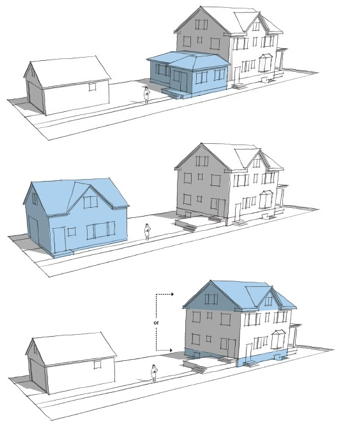Allow zoning exceptions that fit within the broader city-wide plan of walkable centers and mixed-use development.
Centers bring destinations closer to people, making it convenient to walk, bike, take public transportation, or drive short distances. Doing so improves air quality.
Tool: Allow the rezoning of underutilized commercial property between active centers for alternative uses.
Economic development can be fostered by rezoning underutilized commercial properties. Rezoning encourages the revitalization of centers by capitalizing on market trends in the shift from traditional brick-and-mortar stores to online retail and warehouses. As former store spaces become available, they can be repurposed for other uses and thereby preserved as economic and social centers for the neighborhoods they serve. Available sites can be used for a mix of commercial and residential spaces, together with schools, churches, and civic sites.
Tool: Encourage transit-oriented development (TOD).
TOD's encourage moderate- and high-density housing near a transit station. TOD's create an environment conducive to walking, biking, and using public transit. TOD's reduce traffic congestion and accidents, while expanding mobility for cyclists and pedestrians.
Resource
Tool: Allow accessory dwelling units in all residential areas.
Accessory dwelling units are often referred to as backyard cottages, mother-in-law apartments, upstairs apartments, or basement apartments. They are often rented and thus provide alternatives to the development of new housing by increasing affordable-housing options and density in existing neighborhoods.

Pictured above are three different types of Accessory Dwelling Units (in blue).
Resource




